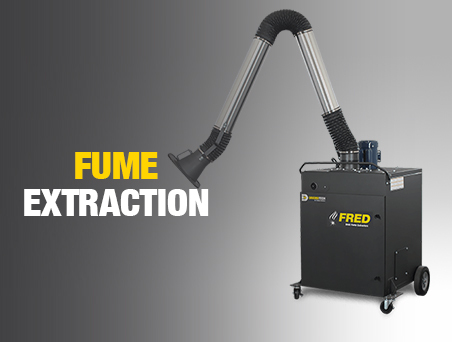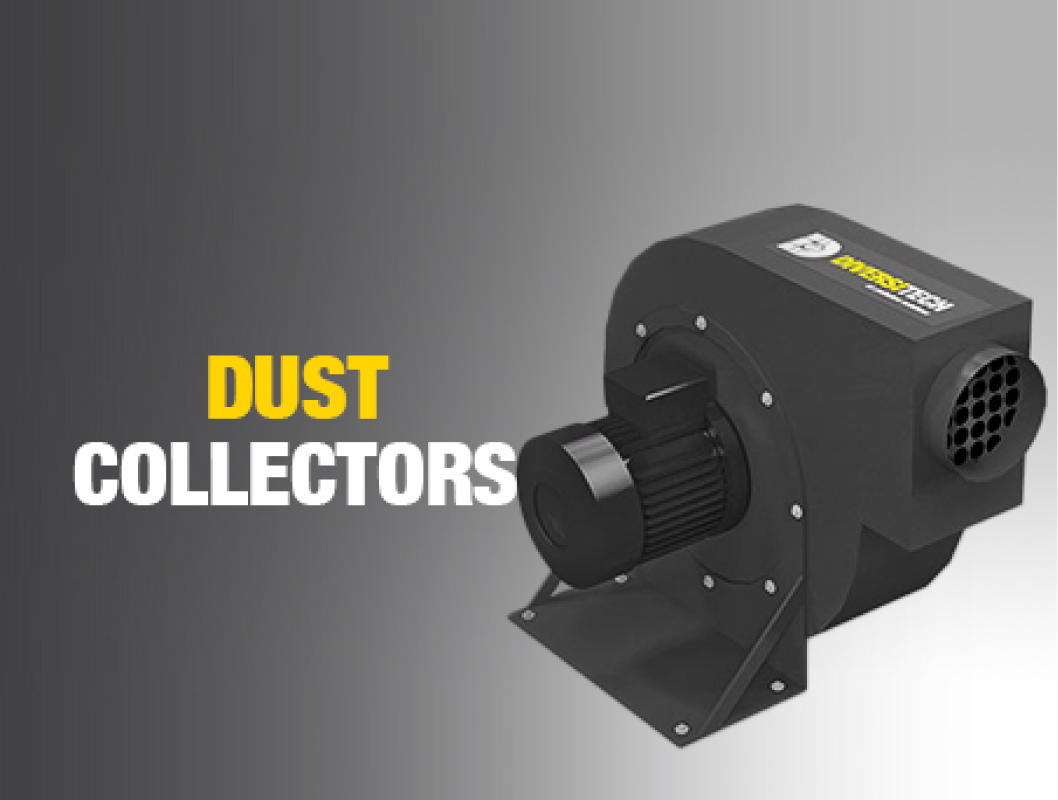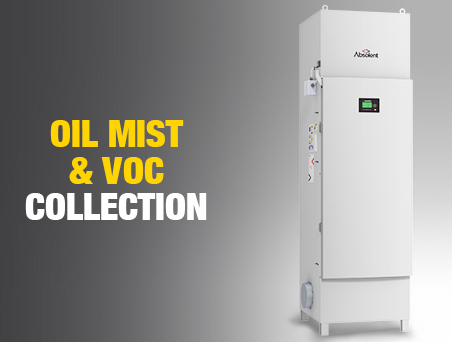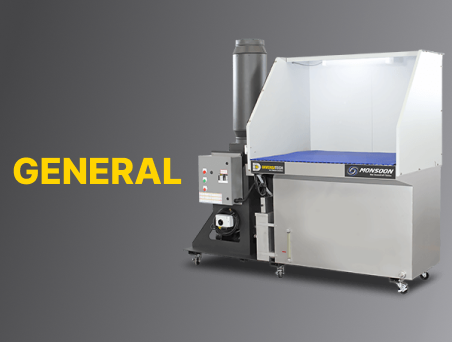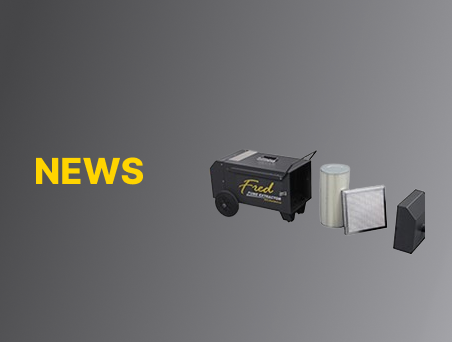… And How Air Filtration Systems Can Help
In recent years, the frequency and intensity of wildfires have surged dramatically, affecting not only the immediate environment but also the quality of air we breathe indoors. These fires release vast amounts of smoke and pollutants that can travel hundreds of miles, often impacting areas far beyond the initial wildfire site. Whether you are an office manager or factory supervisor, it is imperative to recognize the profound implications of wildfires on indoor air quality and to implement effective air filtration systems to mitigate these risks. Understanding the types of pollutants generated by wildfires and how they infiltrate your facility can help you take proactive measures to protect your employees and operations.
High Risk Areas in North America
Certain regions across Canada and the United States are more prone to wildfire-related air quality hazards due to a combination of environmental factors. Some of these factors include:
- dry climate conditions
- high temperatures
- low humidity levels
- strong winds
Whether individually or in combination with one another, any of these factors can create ideal conditions for wildfires to ignite and spread rapidly.
In regions like California, the Santa Ana winds can exacerbate wildfires, carrying smoke and pollutants over long distances. Additionally, the presence of dense forests and vegetation in areas like British Columbia and the Pacific Northwest provides ample fuel for wildfires to grow in intensity. Human activities, such as land development near forested areas and inadequate fire prevention measures, also contribute to the increased risk of wildfires in these regions. The combination of these factors makes certain North American regions more susceptible to wildfire events, leading to significant impacts on indoor air quality and public health.
The Detrimental Effects of Wildfires on Indoor Air Quality
Wildfires, particularly those in regions like California and Canada, generate copious amounts of smoke, particulate matter, and other pollutants. These pollutants infiltrate indoor environments, posing significant health hazards. The smoke from wildfires contains a complex mixture of organic and inorganic compounds, including harmful chemicals and metals. When these substances enter indoor spaces, they can linger for extended periods, continually affecting air quality and posing long-term health risks.
Particulate Matter and Its Impact
Particulate matter (PM) is a major component of wildfire smoke. It consists of tiny particles that can penetrate deep into the lungs, causing respiratory issues, cardiovascular problems, and exacerbating pre-existing health conditions. PM is categorized based on size:
- PM10: Particles with a diameter of 10 micrometers or less, which can cause irritation in the eyes, nose, and throat. These particles are often visible to the naked eye as dust or smoke.
- PM2.5: Fine particles with a diameter of 2.5 micrometers or less, capable of reaching the alveoli in the lungs and entering the bloodstream, leading to more severe health effects. PM2.5 is particularly dangerous because it can carry toxic substances deep into the respiratory system.
Gaseous Pollutants
Wildfires also release various gaseous pollutants, including carbon monoxide (CO), nitrogen oxides (NOx), and volatile organic compounds (VOCs). These gases can cause a range of health issues from headaches and dizziness to more serious conditions like heart disease and cancer. Carbon monoxide, for instance, can interfere with the body’s ability to transport oxygen, while VOCs can lead to chronic respiratory problems and other long-term health issues.
In addition to these gases, wildfires can produce ozone (O3) when NOx and VOCs react in the presence of sunlight. Ozone is a powerful respiratory irritant that can exacerbate asthma and other lung conditions, making it a significant concern for indoor air quality during wildfire events.
Indoor Air Quality in Industrial Settings
In industrial environments, poor indoor air quality due to wildfire smoke can lead to decreased productivity, increased absenteeism, and higher healthcare costs. Employees exposed to contaminated air are at a greater risk of developing acute and chronic health conditions, which can significantly impact their well-being and job performance. The presence of pollutants can also affect sensitive manufacturing processes, leading to product defects and operational inefficiencies.
Furthermore, prolonged exposure to poor air quality can result in long-term health effects, including chronic respiratory diseases and cardiovascular problems. This not only affects the health of employees but also increases the company’s liability and potential for legal issues related to workplace safety.
Indoor Air Quality in Offices & Medical Facilities
In offices and medical facilities, poor air quality resulting from wildfires in surrounding areas can have significant impacts on the health and well-being of not just employees but also patients and visitors. Prolonged exposure to poor air quality can exacerbate the effects of existing health conditions like respiratory issues and cardiovascular problems, further increasing patient discomfort and making it more difficult for them to recover. As for employees, poor air quality can result in decreased productivity, increased absenteeism, and higher healthcare costs for businesses and medical facilities. Additionally, long-term exposure to contaminated air can contribute to chronic respiratory diseases and other health issues, increasing the liability and potential legal issues related to workplace safety for employers.
The Role of Air Filtration Systems in Mitigating Wildfire Smoke
To protect indoor air quality during wildfire events, a robust and effective air filtration system is the ideal tool to help you breathe easy. These systems are designed to remove particulate matter and gaseous pollutants from the air, ensuring a safer and healthier environment. By utilizing advanced filtration technologies, businesses can significantly reduce the concentration of harmful pollutants indoors, thereby safeguarding the health of their employees and maintaining operational efficiency.
Types of Air Filtration Systems
There are several types of air filtration systems available, each with its own advantages and applications. Choosing the right system depends on the specific needs of the facility, including the types of pollutants present and the required level of air cleanliness.
HEPA Filters
High-Efficiency Particulate Air (HEPA) filters are highly effective at capturing particulate matter, including PM2.5 and PM10. They are capable of trapping at least 99.97% of particles as small as 0.3 micrometers. HEPA filters are ideal for use in industrial settings where high levels of airborne particulates are a concern. These filters can be integrated into existing HVAC systems or used in standalone air purifiers to provide localized air cleaning.
In addition to their effectiveness, HEPA filters are also known for their durability and long service life, making them a cost-effective solution for maintaining indoor air quality over the long term.
Electrostatic Precipitators
Electrostatic precipitators use an electrical charge to capture particles. As air passes through the unit, particles are charged and then collected on plates with an opposite charge- an effective method for removing fine particulate matter and VOCs. Electrostatic precipitators can enhance overall air cleaning performance when used in combination with other filtration technologies.
These systems are particularly beneficial in environments with high levels of fine particulate matter, such as welding shops and other industrial settings where dust and smoke are prevalent.
Practical Implementation of Air Filtration Systems
Assessing Indoor Air Quality
The first step in implementing an effective air filtration system is to assess the current indoor air quality. This involves monitoring the levels of particulate matter, gaseous pollutants, and other contaminants. It is important to note that during wildfire season, especially if your facility is in the path of the smoke’s travel, the presence of dust and VOCs will likely be higher than during normal conditions. Conducting a thorough assessment helps identify the specific pollutants present and their concentrations, allowing for a targeted approach to air filtration. Recurring air quality assessments can also help track the effectiveness of installed filtration systems, ensuring that they continue to provide optimal performance.
Selecting the Right Filtration System
Based on the assessment results, select an air filtration system that meets the specific needs of your facility. Consider factors such as the size of the area to be covered, the types of pollutants present, and the required filtration efficiency. It is also important to consider the maintenance requirements and operational costs of the chosen system.
Consulting with air quality experts or industrial hygienists can provide valuable insights and help in selecting the most appropriate filtration technology for your specific needs.
Installation and Maintenance
Proper installation and regular maintenance are critical to the performance of any air filtration system. Implementing a routine maintenance schedule and training staff on proper maintenance procedures can help ensure the long-term effectiveness of air filtration systems. Poor maintenance and improper system setup can both lead to reduced filtration efficiency and increased operational costs. To ensure the best possible performance of your system, always follow the manufacturer’s instructions or enlist the help of a professional installation team.
Employee Training and Awareness
Educate employees about the importance of indoor air quality and the role of air filtration systems. Provide training on how to operate and maintain the systems, and encourage reporting of any issues or concerns related to air quality. Raising awareness among employees can lead to better compliance with air quality protocols and a more proactive approach to maintaining a healthy indoor environment.
In the face of increasing wildfire events, proactive measures to improve indoor air quality are more important than ever. As wildfires continue to pose a looming threat to air quality, implementing effective air filtration systems is essential to protect the health and well-being of employees, maintain productivity, and comply with industry standards. By understanding the complexities of air filtration systems and their implementation, you can take informed steps to protect your workplace and ensure the well-being of everybody within.
Shop our line of electrostatic precipitators
Related Products
TYPHOON WX-3000

Thunderbolt OMU

This Thunderbolt OMU-600 Electrostatic Precipitator is the smaller and lighter weight (66lbs) electrostatic precipitator offered by Diversitech
Absolent A•Smoke

FRED Carbo


